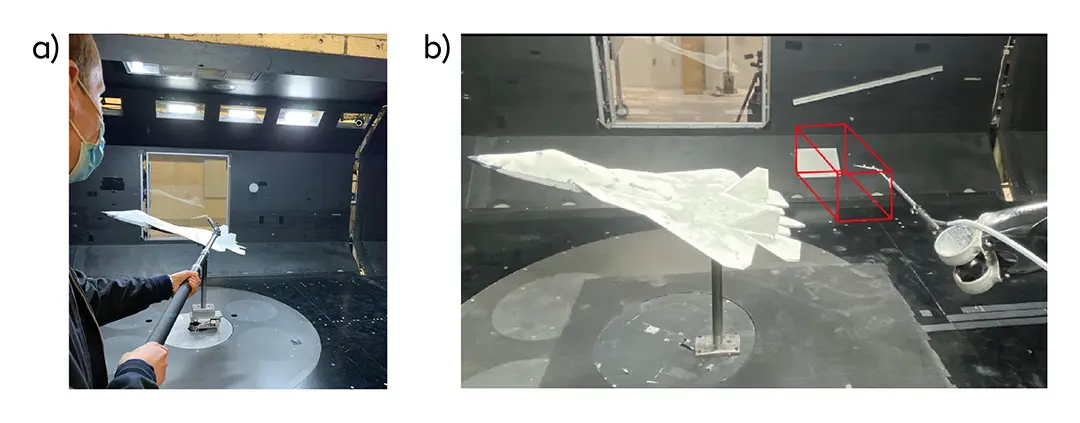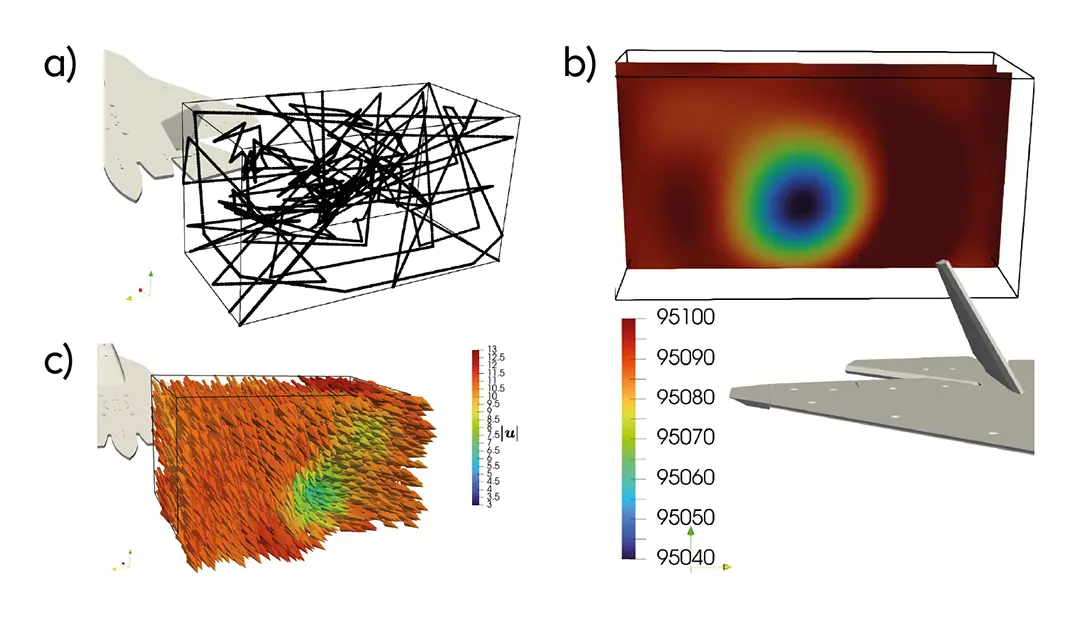
SMARTAIR
Self-guided Machine Learning Algorithms for Real-Time Assimilation, Interpolation and Rendering of Flow Data

Abstract
The proposed project addresses several major challenges encountered in the assimilation of measurement data in aerodynamic testing.
Optimization plays a central role in the design of current and future transportation systems such as trains, airplanes or automobiles. The objective is to develop designs with reduced energy consumption, smaller environmental footprint and increased customer comfort. For this, numerical simulations and experimental tests are being performed, both with their own set of constraints such as turnover times and cost. The Institute of Fluid Dynamics (IFD) operates a wind tunnel for such testing, and the research is focused on the development of novel, efficient measurement techniques to enhance the science data return from such cost-intensive facilities.
The proposed project will focus on two central problems limiting the productivity of experimental aerodynamic test campaigns. Strategies using machine learning will be developed to dynamically assimilate acquired data into a global description of the flow field being measured. Predictive analysis of the data will be employed to direct the measurements process towards regions of significant information as the global knowledge evolves. The measurement time will be reduced relying on adaptive guidance based on real-time data interpretation. The software design will explicitly include the option of a human operator in the loop.
The collaboration between SDSC and IFD offers an attractive way to merge complementary competencies. The tasks of aerodynamic flow field reconstruction, uncertainty quantification and probe guidance will be broken down into distinct activities / work packages such as
- Development of learning algorithms for sparse flow data assimilation using physics-based constraint models;
- Real-time implementation of the software in a suitable computing infrastructure;
- Testing and evaluation of the complete hardware/software system in situ in the wind tunnel facility at IFD.
People
Collaborators


Victor Cohen was part of the SDSC Research team from 2020-2025 to design solutions for data-driven optimization problems. His research interests lie at the crossroad of machine learning and decision-making. This contains several topics such as stochastic optimization, reinforcement learning, combinatorial optimization, and probabilistic graphical models. Victor received a PhD in operations research and machine learning from Ecole des Ponts Paristech in 2020. Before that, he completed a master degree in Operation Research and Machine learning at Ecole des Ponts Paristech and a bachelor degree in Applied Mathematics and Computer Sciences.


Fernando Perez-Cruz received a PhD. in Electrical Engineering from the Technical University of Madrid. He is Titular Professor in the Computer Science Department at ETH Zurich and Head of Machine Learning Research and AI at Spiden. He has been a member of the technical staff at Bell Labs and a Machine Learning Research Scientist at Amazon. Fernando has been a visiting professor at Princeton University under a Marie Curie Fellowship and an associate professor at University Carlos III in Madrid. He held positions at the Gatsby Unit (London), Max Planck Institute for Biological Cybernetics (Tuebingen), and BioWulf Technologies (New York). Fernando Perez-Cruz has served as Chief Data Scientist at the SDSC from 2018 to 2023, and Deputy Executive Director of the SDSC from 2022 to 2023
description
Motivation
Measuring the flow field surrounding an object using the probe system (Fig. 1) gives a continuous stream of data. Based on this data, the goal of this interactive procedure is the volumetric reconstruction of the mean properties (flow direction, magnitude) and derived quantities (vorticity, streamlines, etc.) of the flow field with the highest fidelity in minimal time. To do so, we aim at developing a machine learning method that can reconstruct the flow field based on the incoming data. In addition, we aim at reducing the experiment time using a machine learning tool identifying significant regions of interest where further acquisition will help to reduce the uncertainties and improve the information about the flow field.
Proposed Approach / Solution
The solution developed for this project is a probe sampling strategy along with a flow field reconstruction algorithm based on Gaussian process regression (Fig. 2). The solution requires minimal prior flow field knowledge and is fully autonomous. Simply place the object in the wind tunnel, and the active learning algorithm begins. Smartair measures the target domain until a predefined time limit or model certainty is reached, saving costs, energy, and human resources. To the best of our knowledge, this is the first machine learning based solution to measure flow fields using wind probe data, and its approach has the potential for broader flow field analysis. It has been implemented in the wind tunnel facility of the Institute of Fluid Dynamic at ETHZ.
Impact
The solution provides improvements on the flow field reconstruction process and the experiments performed in the wind tunnel facility show that we are able to reduce the overall measurement time. The autonomous aspect of the approach makes it easy to use within a wind tunnel facility.


Presentation
Gallery
Annexe
Additional resources
Bibliography
- Andreas Müller, Andrin Landolt and T.K. Rösgen (2012). Probe capture for quantitative flow visualization in large scale wind tunnels. 28th Aerodynamic Measurement Technology, Ground Testing, and Flight Testing Conference
- Andreas Müller (2017). Real-Time 3D Flow Visualization Technique with Large Scale Capability. PhD thesis, ETHZ collection.
- Andreas Müller (2017). Demonstration of a Real-Time 3D Flow Visualization Technique with Large Scale Capability. 52nd Annual SATA Conference
Publications
Related Pages
More projects
OneDoc 'Ask Doki'
SFOE Energy Dashboard
Enhancing resource efficiency
News
Latest news


Data Science & AI Briefing Series for Executives
Data Science & AI Briefing Series for Executives


PAIRED-HYDRO | Increasing the Lifespan of Hydropower Turbines with Machine Learning
PAIRED-HYDRO | Increasing the Lifespan of Hydropower Turbines with Machine Learning


First National Calls: 50 selected projects to start in 2025
First National Calls: 50 selected projects to start in 2025
Contact us
Let’s talk Data Science
Do you need our services or expertise?
Contact us for your next Data Science project!




